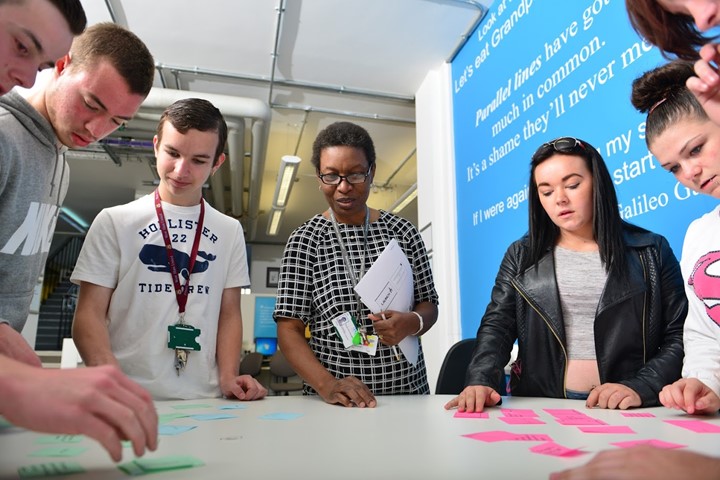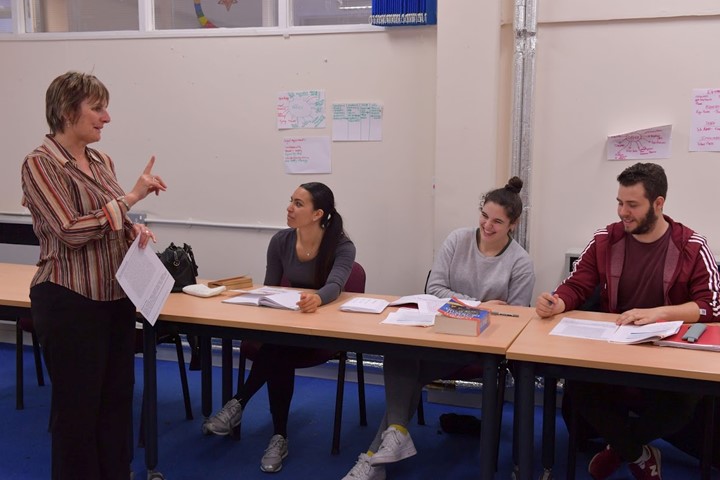Ever tried and failed?
How research reveals why fantasising about achieving a goal can backfire.
Why is it that so many of us, despite our best intentions, fail to achieve our goals? Marcin Lewandowski, Head of Learning at Action West London, believes that recent research is uncovering something surprising in the world of education – the problem, it seems, may be with the actual act of fantasising about achieving a goal and how ‘mental contrasting’ has been found to help professionals manage their busy lives.
New Year’s Day marks a new beginning that we welcome with fireworks and lavish parties. It’s an opportunity to reflect on the past year and to start afresh - to finally make those positive changes in our lives.
Each year up to 63% of Britains make New Year’s resolutions. We set those goals, convinced that this year will be different (we will get fitter, eat more healthily and lose weight) and every year we break them not long after. In fact, so prevalent is this phenomenon that 43% of us quit our resolutions in the first couple of weeks. This figure rises to 66% before January is even over.
There are various reasons why so many of us may fail to achieve our goals:
We set un-SMART goals. We procrastinate, giving in to ‘feel good’
We underestimate the distracting power of our environment or how much work and effort this change will require
We may feel apprehensive about stepping out of our comfort zone.
Playing mind games
An exciting new area of research has emerged that looks at this curious dissonance. On the one hand, science tells us that goals drive us forward by directing our attention and effort, regulating effort expenditure, encouraging persistence until the goal is accomplished, and so on. On the other hand, as we’ve seen we have this tendency to give up on our resolutions as soon as we set them despite our strong intentions and resolve to achieve them.
Gabrielle Oettingen, a researcher who has spent years looking at this conundrum, has argued that, whilst the assertion that “the brain motivates us by carrying an image of where we want to go and how we will feel when we get there", (McLean, 2003) may be true, fantasising about achieving a goal can backfire.
She has contended that fantasising tricks the brain into thinking that the goal has been achieved. Those vivid positive fantasies, it seems, make us feel so good that we often settle for the fantasy and fail to pursue it further.
In the context of education, Oettingen and her colleagues were able to show that positive fantasies about achieving good course grades were associated with lower grades, less studying and lower reported study effort in college students. This was also the case in a vocational context where positive fantasies predicted poor academic achievement for vocational students.
They showed that positive fantasies about achievement in school predicted lower attainment at the end of the school programme even in students faced with economic and social disadvantages. Yes, you read it right. Positive thinking stops us from achieving our goals!
Oettingen and colleagues explain that “… positive fantasies allow people to mentally experience a desired future in the present and conceal the fact that effort must be invested if the future is to be actually achieved; thus, positive fantasies are not the key to mastering a difficult environment. Quite to the contrary, they predicted low effort in the form of more days absent from school and poor achievement in the form of lower school grades. (Kappes, et. al. 2012: 60).
Oettingen proposed that this fantasising about our future selves should be followed by ‘mental contrasting’. This essentially means creating a mental contrast between the fantasies and the reality with all its messiness. This allows us to identify potential obstacles which may get in the way of us achieving our goals.
Mental contrasting affects behaviour in three different ways:
It strengthens the association between future and reality when expectations are high and weakens it when they are low
It strengthens the association between reality and instrumental ways to overcome reality. For example, for a student expecting a good grade in an upcoming exam, it could be a toss between going to a party (reality/obstacle) and staying at home to revise (the action to overcome the obstacle)
Mental contrasting changes the meaning of reality, in other words, reality is interpreted as an obstacle only when expectations are high (for example, the party on Saturday is not a fun event, but an obstacle to obtaining a high grade).
Oettingen argues that mental contrasting as a self-regulation strategy is quite versatile and can be used across people’s life spans regardless of their socio-economic status and cultural background. Mental contrasting has been shown to be effective in a range of situations and contexts. For example, in one study students who were taught to mentally contrast their desired future with reality performed better on foreign language vocabulary tests two and four days later compared to students who were asked to imagine desired future only.
It is worth noting that this study was conducted in schools in Germany and the USA on students from low-income neighbourhoods. Elsewhere mental contrasting has been shown to help type 2 diabetes sufferers improve their self-care including dieting behaviour and exercising.
Busy health care professionals were also able to better manage their busy lives and deal with professional and private problems when they were trained to self-regulate in this way. Mental contrasting works because it “helps to resolve short-term concerns and fulfill long-term wishes as it provides clarity and direction of what one wants to achieve and what is necessary to let go of" (Oettingen & Schwörer, 2013: 3).
Going conditional
However, being able to anticipate the obstacles should also allow us to better plan for them. This is what Oettingen decided to investigate, enlisting the help of her husband, a German professor of psychology in the Psychology Department at New York University - Peter M. Gollwitzer.
Gollwitzer had been investigating how goals and plans affect cognition, emotion, and behaviour. Pertinent here is his research on using ‘implementation intentions’ – the forging of explicit intentions of how to achieve the goals which include identifying obstacles and planning how to overcome them which can be simply summed up as forming ‘if-then’ plans.
Gollwitzer and colleagues have carried out numerous studies and experiments which showed effectiveness of implementation intentions. A meta-analysis of almost a hundred studies demonstrated a medium to large effect of implementation intentions on behaviour and on the likelihood of achieving our goals.
Despite their simplicity, Gollwitzer’s Implementation Intentions have been shown to work in situations from health-related activities, such as engaging in exercise or better diets through reduction of fat consumption to helping individuals regulate their emotional responses to aversive stimuli such as spiders. They were even effective in getting a group of drug addicts to write a CV by a set deadline (8 of 10 who made implementation intentions wrote the CV versus zero out of 10 for those who didn’t make plans).
Implementation intentions work because of its inherent conditionality. The condition contained within the if-clause becomes a cue for the action in the result clause (for example, the doughnut in the clause: If I see a doughnut, I will have an apple!). Oettingen argues that “forming implementation intentions prepares us mentally to take action by reactivating in our minds the situation of an obstacle or opportunity arising". Creating if-then plans conditions us to respond to pre-selected situational cues and automates goal striving, that is, seeing a doughnut should prompt us to have an apple.
Oettingen and Gollwitzer had a sense that Mental Contrasting and Implementation Intentions could work well together. After all, what's the point of identifying obstacles if you’re not going to do anything about them. They decided to merge their theories into one they called ‘Mental Contrasting with Implementation Intentions’, or MCII for short. We’ve seen each of the theories deliver positive outcomes, but how much better would a combination of the two be?
Oettingen (2014) argued that "performing mental contrasting and implementation intentions together could make selecting and attaining wishes easier and more effective by maximising the work your mind does without your conscious effort". Research carried out by Oettingen, Gollwitzer and other researchers confirms the potential of MCII. For example, MCII has been effective in getting people to exercise more and to switch to healthier diets. Impressively, participants in the experimental group (in other words, those who were shown how to use MCII) sustained their healthy diets two years after the intervention.
How MCII helps in educational settings
In educational settings, an MCII intervention led to a significant improvement in children’s grades, attendance and conduct and children at risk of ADHD were better able to self-regulate their behaviour following only one training session. MCII was also effective in helping students manage their time better, and working mothers enrolled in a vocational business programme attended classes more regularly.
MCII soon became WOOP (Wish, Outcome, Obstacle, Plan) which, in Oettingen’s opinion, not only captured all the key steps involved in MCII, but also seemed more accessible to the general public. And I agree. So next time you’re making New Year’s resolutions or setting goals (your own or with your learners), why not WOOP them - it’s simple enough and, this time, it might just work!





